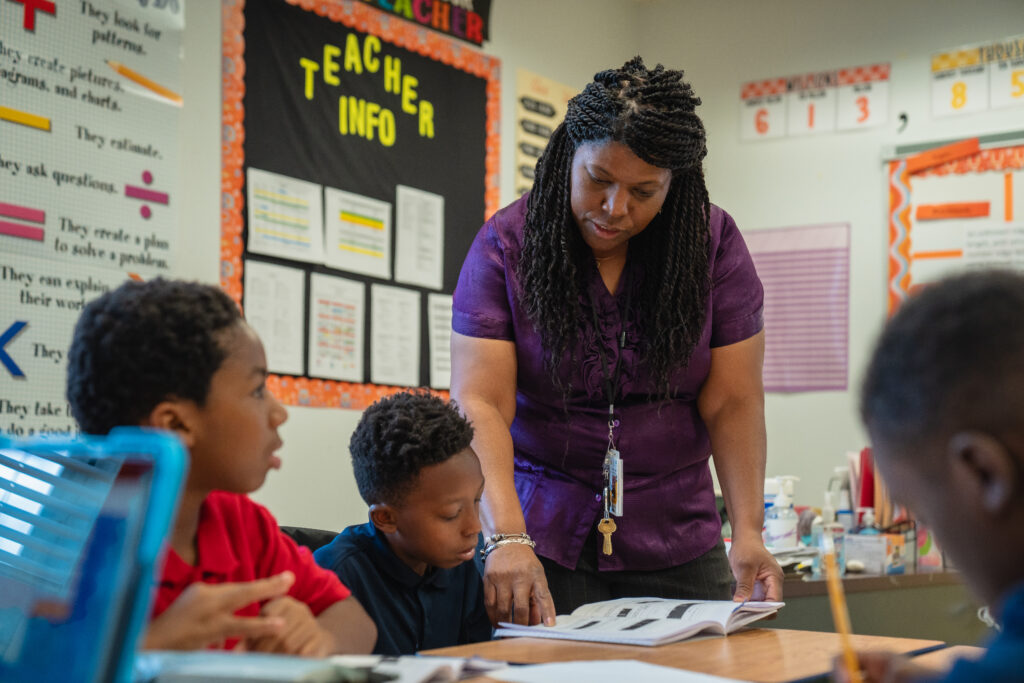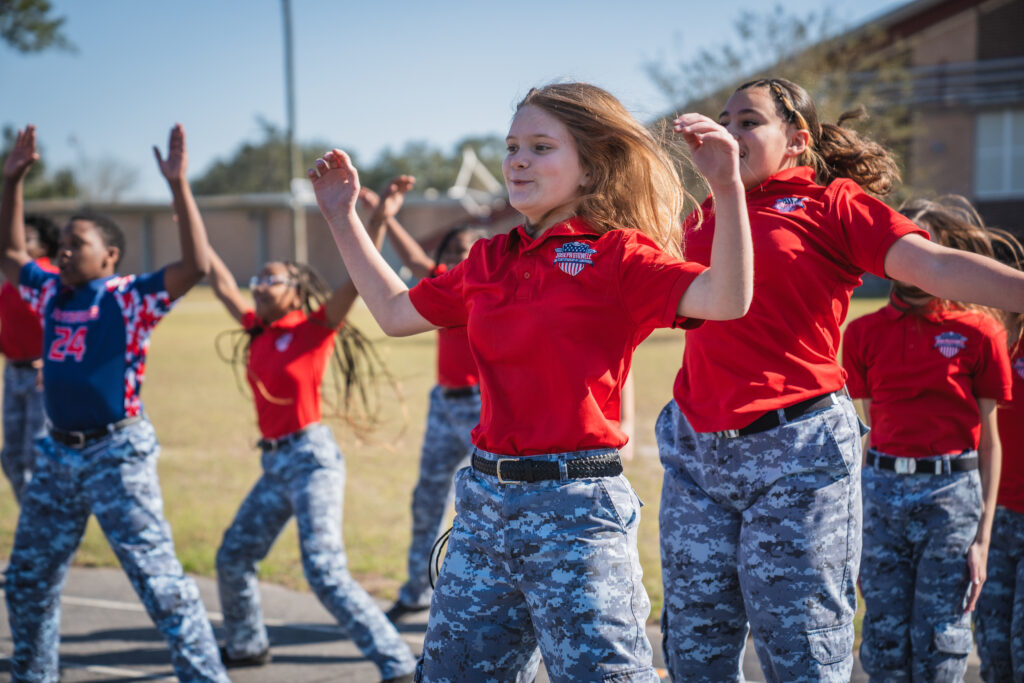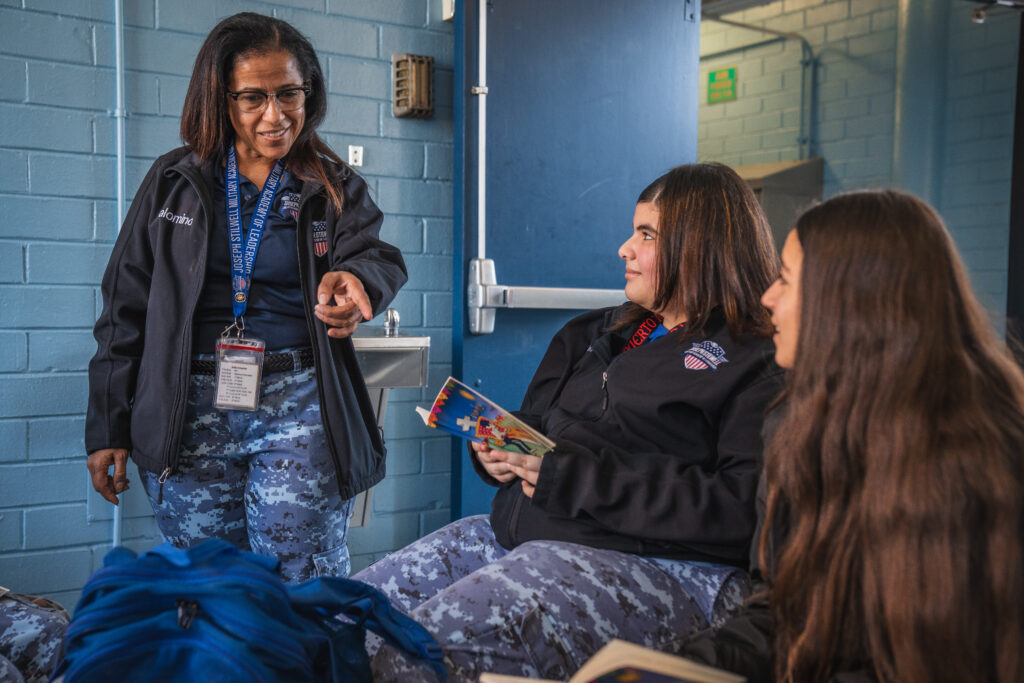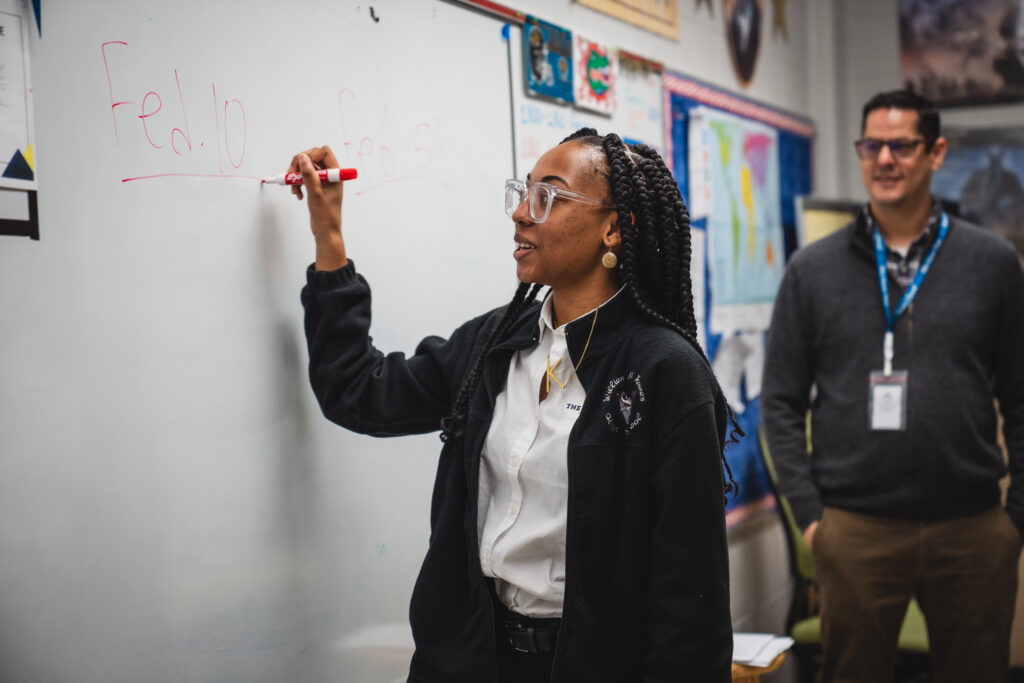Sept. 23, 2024 – “Why is school attendance important?” For teachers like Jacqueline Villaronga, understanding the answer to this question is critical.
“The impact of not being in school definitely leads to later life challenges,” shares the Joseph Stilwell Military Academy of Leadership educator. “When (students) have to go out and become productive members of society, they’ve missed a lot of opportunity in learning.”
Today we’re speaking with educators and leaders from three Team Duval schools – elementary, middle, and high – about the impact of missing school, and the turnaround stories they’re seeing on their campuses.
But first, let’s look at the facts surrounding school attendance.
The Facts: Why School Attendance Is Important
The statistics and outcomes tied to low attendance speak for themselves. According to research:
- Missing two days a month is the equivalent of missing 10% of the year’s instruction.
- Poor attendance can indicate whether students will be held back in the third grade.
- High absence rates can also point to whether students will graduate high school on time, if at all.
District data also reveals that third graders and 10th graders who score the lowest on the state’s English and Language Arts Assessments (Level 1 in the table below) are more likely to miss 20 or more days of school. Passing these tests is among the requirements for students to be promoted and to graduate.
| 3rd Grade ELA State Assessment Achievement Level | Absent 20+ Days 2023-2024 | 10th Grade ELA State Assessment Achievement Level | Absent 20+ Days 2023-2024 |
| 1 | 39.8% | 1 | 55.5% |
| 2 | 31.6% | 2 | 47.3% |
| 3 | 25.8% | 3 | 34.9% |
| 4 | 23.1% | 4 | 27.4% |
| 5 | 17.2% | 5 | 19.2% |
“We need students to attend school regularly because it starts to indicate whether they’re on grade level with their peers throughout their educational journey, and we want to make sure they’re reading proficiently,” insists Executive Director of High School Programs Wendy Dunlap.
Attendance in Elementary School: Northwestern Legends
For elementary students, missing too much school disrupts their ability to learn foundational skills. Northwestern Legends Elementary School Principal Kimberly Brown would know — last year, 63% of her students missed 20 or more days of school.
“It’s almost like a domino effect,” shares Brown. “It affects relationship building here at the school, behavior, and the ultimate impact is academics.”

Students who are frequently absent develop learning gaps
Brown explains that from day one, instruction is taught in concepts designed to build upon each other. Students who consistently miss class will have difficulty keeping up because they’re lacking critical foundations.
“They’re missing out on the learning process. Interventions have to be put in place, and you’re having to re-teach” adds Marva Payne, a school counselor at Northwestern Legends.
Absent students have a harder time developing rituals and routines
Not being able to acclimate to school routines is also a result of low attendance, and this is detrimental for students, especially those newest to school.
“There are structures that we set up at school,” Brown explains. “But if they miss most of school…now they don’t understand why I have to sit in my chair for this period of time, and why do we line up like this?”
Students who don’t attend school have difficulty developing relationships
Experts say missing class hurts students’ ability to develop important relationships. By not being in school regularly, students have a harder time learning how to be around adults and students outside their families.
“Children learn through those relationships,” says Payne. “Just learning how to get along with one another, learning how to be good citizens, and interacting with one another – all of that is part of the relationship-building process.”

Turning attendance around
To combat the high number of absences, Principal Brown says the school implemented a multi-tiered strategy, including:
- Creating a task force. A special team of teachers and the school counselor was created to come up with strategies and solutions.
- Speaking to families. School leaders met with parents one-on-one to discover root issues.
- Establishing incentives for students. This includes holding an “Atten-dance” for students who regularly attend class.
Brown says thanks to these strategies, more students are attending school than ever.
“I have 355 students who get to come to our (first) ‘Atten-dance’. That’s the most ever in history for students to be here for the first weeks of school!”
Attendance in Middle School: Joseph Stilwell Military Academy
Regular attendance becomes even more important for middle school students, especially as they transition into more advanced schoolwork.
“It’s harder as they get older. They’ve made up their minds about the value of school,” says Chris Dillinger, school counselor at Joseph Stilwell Middle Military Academy. He’s seen firsthand the negative impacts absenteeism has on students — last school year, the school’s chronic absenteeism rate reached 52%.

Students who don’t attend school are more likely to develop behavioral issues
School Behavior Interventionist Shiffon Champion-Holmes affirms that behavior is part of the “domino effect” of irregular attendance. She says,
“They tend to be behind their peers because they missed the material. Sometimes (this) translates into them having a little bit of self-doubt and a lack of confidence in the classroom setting, which then can turn into behavioral issues.”
Students who don’t come to school miss unique learning opportunities
Whether they’re participating in Career and Technical Education, exploring visual and performing arts, or trying out for an athletic team — if students aren’t in school, they can’t discover and explore their interests.
“Every day they’re missing school, they’re missing out on the chance to take advantage of those opportunities,” says Dillinger.
The middle school transition is even more difficult with irregular attendance
Leaders go on to say students who come to school regularly will have a much easier time transitioning to the social and emotional dynamics of middle school.
“I think middle schoolers need to have a sense of belonging. They’re missing out on that if they’re not in school interacting with their peers on a regular basis,” says Champion-Holmes.

Turning attendance around
A combination of strategies, including positive interventions and personal contact, have helped lower Stilwell’s chronic absenteeism rate from 52% to 24.15%. Some of the school’s turnaround tactics include:
- Working with nonprofits. Specifically, with City Year to identify root causes.
- Encouraging incentives. Stilwell is using Bizi, a tool that allows students to earn “BiziBucks” as they engage in good behavior, such as regular attendance. Students can then use their “money” to redeem rewards.
- Regularly reviewing attendance records. This includes running school attendance reports weekly.
- Reaching out to students. Teachers make calls when students have two or more unexcused absences.
With these strategies, staff say lives are changing.
“When they come back, their grades are improving. Their social life is improving because they’re connecting with friends and being engaged,” says Dillinger.
“It’s all about making a connection. You have to give them a reason,” adds Villaronga. “There has to be something to break that chain and bring them from ‘I can’t’ to ‘I can’.”
Attendance in High School School: William M. Raines
When it comes to attendance for high school students, educators say there’s no other way to put it –– graduation is at stake.
“High school is getting closer to the end of the of the line,” shares Brandie Stallings, Assistant Principal at William M. Raines High School. “You don’t have as much time to recover.”
Seeing students graduate with a high school diploma is what drives Stallings and other staff at Raines High School to continually improve their attendance rate. Without regular attendance, she says their chances suffer.

Excessively absent students may not earn the credits or pass assessments needed to graduate
Being graduation-ready doesn’t happen overnight. Stalling says earning the credits and test scores required for a high school diploma takes time and consistency.
“When students do not come to school and it’s testing season, they’ve already missed out on so many minutes and hours and days of instruction,” she explains. “Where they could have been proficient years prior, you may see a drop, and it’s not because of their ability.”
Students who miss school may underestimate the value of having a diploma
Stallings says students who are chronically absent – particularly older ones – often don’t have the proper valuation of a high school diploma. It’s a mindset she says can be corrected with the right amount of encouragement and understanding.
“We explain that this is an opportunity to open another door. You don’t have to just be the worker; you can move into management. You can go to college. (A diploma) puts them in a position so they can further their careers.”

Absent students miss opportunities to sustain what they’re learning
Without regular attendance, Stallings says students will have a hard time sustaining skills.
“It’s missed opportunities for them to really build skills and build a muscle in that area.”
Turning attendance around
Stallings is proud to say that the absence rate at Raines High School has gone down. So much so, leaders point to the school’s increasing graduation rate and its first-ever “B” grade. She says the turnaround can be credited to three overarching strategies:
- Making home visits. At Raines, the principal, assistant principal, school counselors, and teachers make home visits when students are not in class.
- Executing Operation “ICARE.” Also known as “I call and report every day,” this reminds staff to call students they haven’t seen in class.
- Offering additional support. This includes mentoring and after-school sessions.
“We have seen quite a few turnaround stories,” shares Stallings. “We’ve seen a lot of students make a change from 9th through 12th grade and go on to get full scholarships. Students graduating on time with their cohort.”

Tips to help students and families maintain regular attendance
In terms of tackling attendance, Principal Brown says this — “Parents are the ultimate decision makers in getting them to school.”
It’s why Brown and other leaders advise families to put their own strategies into practice to encourage regular attendance.
Establish regular routines
By having routines set in place, educators say students will have fewer reasons to miss school. This includes:
- Tracking school days and holidays with the district calendar
- Establishing a bedtime and a time to wake up
- Having clothes picked out and items packed before bedtime
Remain active in your child’s education
As long as parents stay connected to their child’s schoolwork and assignments, leaders say students will be more likely to remain engaged with school. It’s why district Chief of Schools Scott Schneider recommends all parents:
- Download the district app to ensure communication with your child’s school.
- Set up a Linked Parent Account to track student progress, grades, and assignments.
“We want to make it as transparent as possible so they can not only send their children to school, but (also) be active participants in their child’s education,” says Schneider.
Ensure families understand there are disciplinary consequences to missing school
Dillinger says families must understand that not attending school goes beyond academic and social consequences. With enough absences, parents will be asked to attend an Attendance Intervention meeting, which results in a student and parent contract. If there is no improvement after two meetings, next steps could include a referral to the State Attorney’s Office.
Deal with root causes and barriers to school attendance
Finally, District Director of School Behavioral Health Katrina Taylor says one of the best things that schools and families can do to curb chronic attendance is to address root causes and barriers. She says some of the most common challenges facing chronically absent students include:
- Trauma (such as homelessness, crime, or abuse)
- Lack of resources (such as clothing)
- Academic failure
- Health
But Taylor says as parents are willing to communicate their needs, district leaders can work to provide resources and support.
“If you’re dealing with trauma or mental health, we have counselors. If you need clothing, we have a clothing closet,” assures Taylor. “There’s nothing that a student is dealing with that we as a school district can’t address directly or have the resources to point you in the right direction.”








